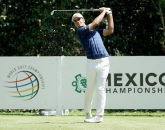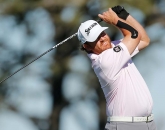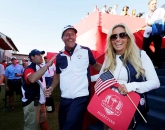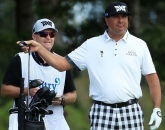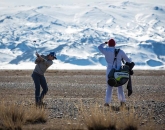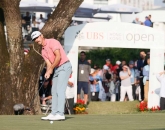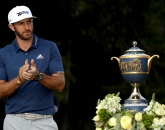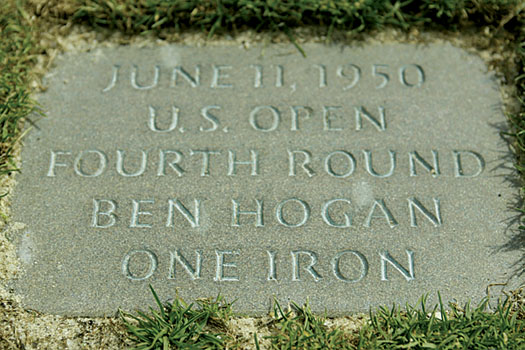
Famous for his meticulous preparation, he surprised everyone by spending the weekend before the championship playing in the "National Celebrities (Pro-Am) Golf Tournament" in Washington DC. Happy to play the straight man to Hollywood stars like Bob Hope and Danny Kaye, he was introduced to the crowd by Attorney General Harold J McGrath who praised him for having completed "the most courageous comeback in sports ..."
Arriving at Merion Golf Club, 11 miles west of Philadelphia, Hogan became annoyed when reporters pestered him with questions about his legs. "I feel fine" was his stock reply. But in the privacy of the home he rented off Ardmore Avenue, he expressed genuine doubts whether his limbs would hold up.
In the three days leading up to the tournament Hogan rarely ventured onto the tree-lined East Course. With the final two rounds played on the Saturday, and hot weather predicted for the week, he restricted the amount of practice holes to just 18 on the Tuesday and five holes on the Wednesday in an effort to preserve his strength. Predictably there was growing speculation in the press that he had not acquired enough knowledge to make a credible challenge. What few of them knew was the "Hawk" had spent four days before his trip to Washington DC secretly mapping every inch of the testing 6,694-yard layout.
Billed as a "Battle of the Giants" between Hogan and top US money earner Snead, interest was intense. With record crowds expected the USGA took the unprecedented step of raising the total prize money from US$10,000 to US$14,900 on the eve of the championship. Not that it made any difference to the determined 37-year old Texan. Having been denied the chance to defend his title 12 months earlier he would have played for shirt buttons given the chance.
Leading the field by a single stroke after rounds of 72 and 69, Hogan cut a lonely, almost isolated figure. Striding down the Merion fairways with his eyes fixed firmly on the ground ahead of him, he rarely uttered a word to anyone other than his caddie. "He was a cold, detached artisan on the course likened by some observers to an undertaker weaving a shroud of defeat for his adversaries," wrote author Will Grimsley some years later.
Just 16 months since his brush with death Hogan played each shot as if it were his last, which for once had a resonance of truth. "Close up you could see his face grimace with pain," said British golf writer Percy Huggins who followed the action in 1950. "And with two rounds played on the final day, it just got worse and worse ..."
A slight stutter in his normally metronomic long game on Saturday morning, saw Hogan (72) overtaken at the top of the leader board by Lloyd Mangrum (69). After a short break for lunch, part of which Hogan spent re-adjusting the thick bandages which encased his increasing aching legs, he stepped onto the first tee of the final round knowing that he could afford few mistakes.
Pages
Click here to see the published article.



